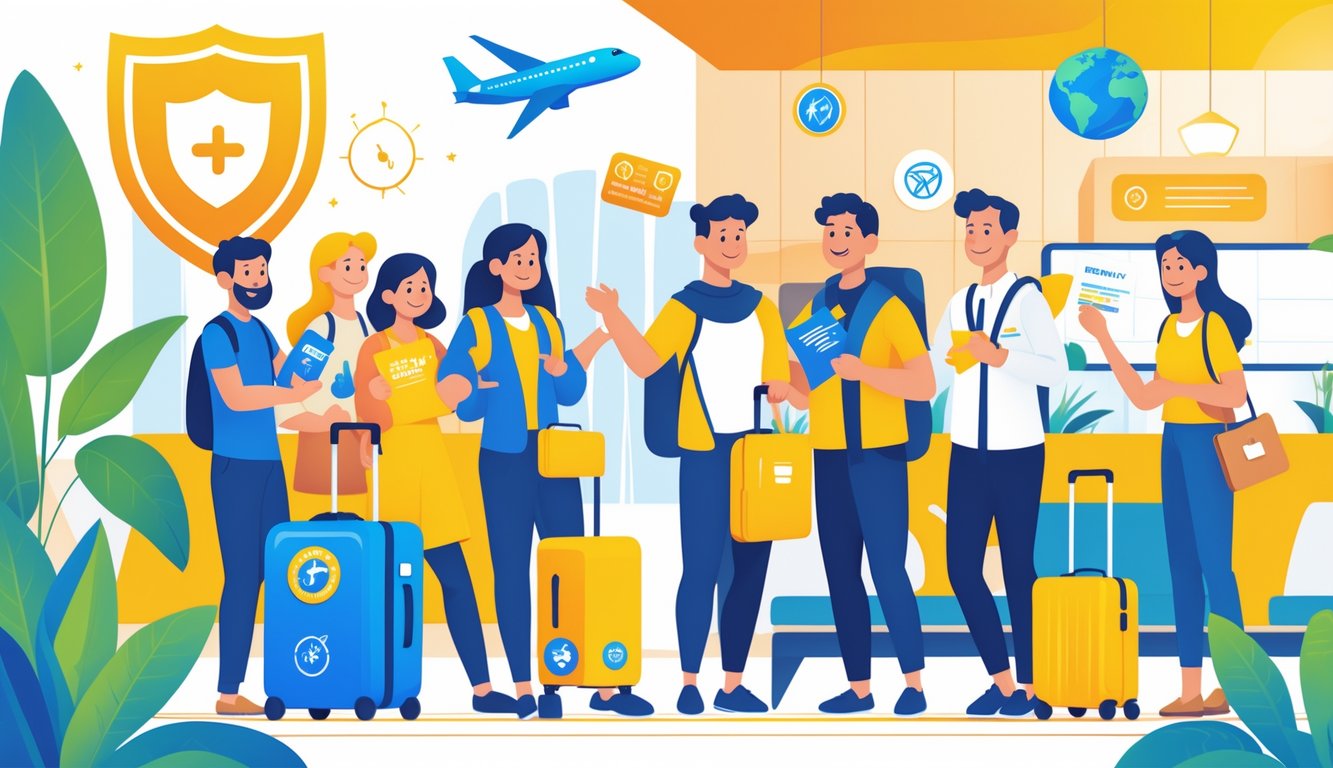
Travel Insurance and Protection Advantages

Flight delayed. Wrong suitcase. Medical bill that looks fake but isn’t. Travel insurance? I used to skip it until I lost my bag for the third time and realized, oh, this is what adults do. Turns out, anyone with half a clue grabs insurance perks through loyalty programs, sometimes without even noticing.
Complimentary Policies through Loyalty
If you’ve got a halfway decent travel card, congrats, you’re probably insured. Nobody brags about it. It’s way cooler to flash a lounge pass than a policy doc. But, buried in the app, some brands hand out trip interruption, lost bag, and emergency medical coverage just for booking through their portal or hitting a certain tier.
My friends call their “Platinum” cards their safety net. I actually tested mine—missed a connection in Paris, and the coverage didn’t flake out. U.S. Travel Insurance Association says millions of claims go in every year, and some Travelers rep told me most payouts are for trip interruptions, not lost bags. Read the fine print, though—buying through a third-party site might void everything. Nobody’s putting that on their stories, obviously.
Hidden Coverage for International Travelers
American health insurance overseas? Might as well be Monopoly money. Most people don’t even realize their loyalty perks sometimes cover global evacuation or pay hospitals directly. Some programs even throw in translation services, but half the points nerds I know only find out when they’re already in trouble. Allianz Partners says U.S. vacation spending hit $214 billion in 2022, and about a third of us got smacked with delays (Phocuswright, 2023).
British Airways and Chase Ultimate Rewards, for example, bury their emergency numbers so deep, you need a map. Go to a country where you pay before you see the doctor? Loyalty insurance sometimes pays upfront—unless you booked with points, which is often excluded (hidden after three asterisks). Miss the claim window? Congrats, you’ll find out months later your “guaranteed” coverage is just paperwork and elevator music.
Maximizing Redemption Values and Customer Satisfaction
Why is it that every time I finally save enough points, the room price jumps or the app tells me to “try again later”? Redemption values are a moving target—like my willpower around snacks. And when you need help, it’s always “please hold” or “submit a form.” No human in sight.
Insider Tips for Best Redemption Strategies
The math in those loyalty brochures is a joke. Book with points, and suddenly last week’s 20,000-point room is now 38,000. CBRE says over half of hotel nights are loyalty bookings now, so why do I feel like I’m getting scammed? Points calculators? Never match reality.
Don’t trust headline rates. Go off-peak, hunt for those weird promos—Marriott and Hilton sneak in “point sales” in March, but you’ll only know if you stalk the blogs. Never let your points expire; apparently, retention jumps 30% if users feel they’re getting value (Switchfly, 2025). There’s no hack for blackout dates. I keep logging out and back in, even though it never works.
Customer Service Shortcuts
Chat support? It’s a bot. I timed it—nine minutes of “please hold,” then a rep who needs my great-aunt’s birthday to help. Here’s what nobody advertises: call after 11 p.m. You’ll get a U.S. rep who can actually do things. Chat is offshore and reads from a script.
Web forms? Forget it. Tweet at the brand—seriously, polite frustration doubles your odds for upgrades or points back (a Hyatt rep admitted it, probably regrets it). Resort fees? Most people don’t even ask to waive them, but sometimes you just need to ask, especially off-season. Sometimes you get a rep who actually helps, and you’ll remember them forever. Most of the time? You’re just running the obstacle course.
Sustainable Travel Incentives in Loyalty Programs
Just when I think I’ve figured out the points game, Delta quietly drops double miles for trains instead of cars—was anyone gonna mention that? Supposedly, 55% of travelers pick programs for eco-perks, but nobody at the counter says a word while I’m wrestling my suitcase. If you care about sustainable tourism, you’ll miss half the perks unless you dig.
Green Rewards and Eco-Friendly Perks
You ever notice the “Green Choice” button in your hotel profile? Most people skip it, but I once got an upgrade for clicking. Marriott might toss you extra points if you skip housekeeping. Airlines like United let you use points for carbon offsets, but nobody at the desk ever brings it up—probably because it’s not as sexy as free drinks.
Last trip, I racked up a reusable amenity kit and 20% off a local tour just for using eco-perks. Not exactly headline news in the app. WTTC says tourism makes up to 10% of global CO2, but only a handful of programs—like Singapore Airlines’ “Offsets with KrisFlyer”—let you send points straight to conservation. You’ll only find this stuff in the footnotes or from a gate agent who’s clearly in a rush.
How Tourism Trends Are Shaping Rewards
I scroll through a loyalty portal, find “eco-conscious experiences” under “Other.” Who labels it like that? iSeatz says half of travelers switch programs for greener options, but unless you look like you’re hiking Patagonia, nobody at the counter mentions it.
Now airlines are giving miles for public transit to the airport instead of just upgrades. Fine, unless you’re dragging three bags and a cranky toddler. Brands claim they’re “future-proofing” with local support and greener perks. Tried redeeming for a carbon-neutral safari? The chart was so confusing I thought it was a prank. Maybe green perks only matter if you’re willing to hunt for them—like everything else in these programs.
Lifetime Value and Long-Term Loyalty Strategies
No one warns you that sticking with an old loyalty number can unlock secret perks or bonus points. It’s not the official stuff that matters—it’s the weird hacks that separate the points hoarders from the tote bag collectors.
Building Lifetime Value as a Traveler
I’ve wasted hours on spreadsheets, and here’s the thing—chasing sign-up bonuses barely moves the needle. It’s the boring, repeat stuff: airport snacks, booking on Wednesdays (seriously, Delta loves midweek), registering for those random promos.
A marketing exec at some airline conference whispered, “Retention beats acquisition by 300%—stop acting like new apps matter if you don’t actually use them.” She’s right. The people grinding out elite status every year drive all the value. Some programs send secret “accelerator” offers to loyalists, but only if you call and pester them. I did. Got in. Worth it? Maybe.
Adapting Customer Behavior for Lasting Benefits
Everyone obsesses over points, then freaks out when their status drops after missing a couple trips. Adjusting your habits is boring, but it’s how you keep VIP perks—credit every hotel stay, even the tiny ones, or buy through airline shopping portals (weirdly, those count for status).
Skift says automating point-earning boosts lifetime value 20% over old-school methods. I forget sometimes and suddenly I’m back at square one. The system does not care if you’re tired. I still laugh at how booking a one-way rental car with the right card triggers multiple bonuses if you know the codes.
Personal Growth Through Travel Engagement
Nobody talks about how chasing status changes how you see loyalty. I started tracking weird routes, obsessing over seat hacks, and now I get random invites for lounge pop-ups or “mystery multipliers.” An Amex Platinum rep once told me, “Frequent engagement boosts travel confidence—it’s not just about the flights.”
When I actually paid attention—tracked promos, swapped stories on FlyerTalk, read the fine print—I didn’t just get perks, I started seeing myself as a legit traveler. Not right away, and I still miss “exclusive” drops, but it changed my whole approach. Maybe the real value isn’t just for the airlines; it’s the know-how and confidence you build by being kind of obsessed.



